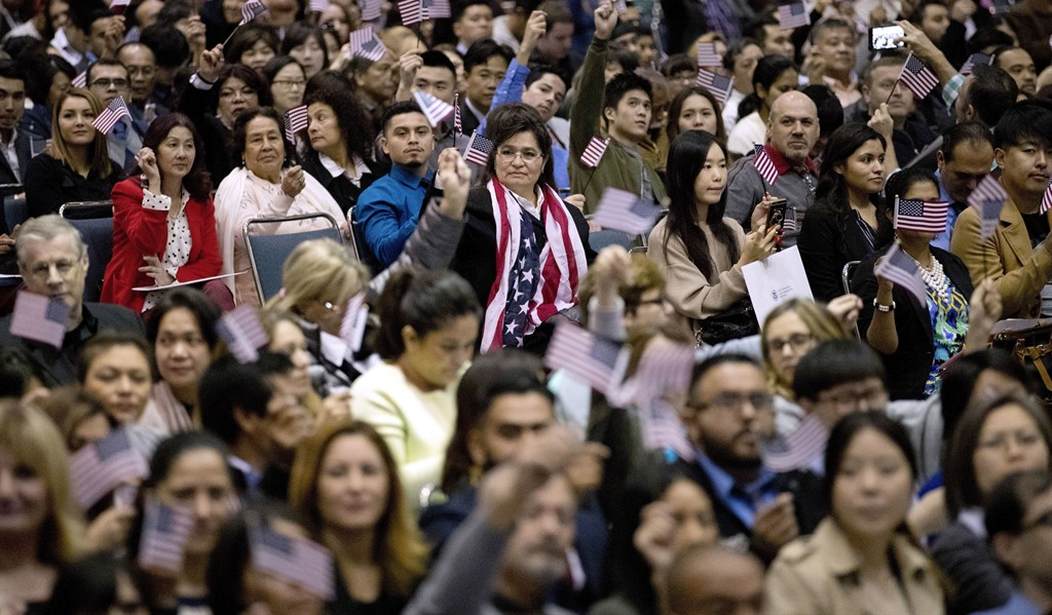Senator Tom Cotton (R-Arkansas) and Senator David Perdue (R-Georgia) unveiled a bill titled, "the Reforming American Immigration for Strong Employment (RAISE) Act," on February 7th. This bill seeks to limit legal immigration to "637,960 in its first year and to 539,958 by its tenth year-a 50 percent reduction from the 1,051,031 immigrants who arrived in 2015." According to Senator Cotton's officialwebsite, the Act aims to achieve the reduction of legal immigration by doing the following:
- Retain immigration preferences for the spouses and minor children of U.S. citizens and legal permanent residents while eliminating preferences for certain categories of extended and adult family members.
- Eliminate the 50,000 visas arbitrarily allocated by lottery.
- Limit refugee visas to 50,000 per year.
Other than eliminating the visa lottery program, which I support wholeheartedly, the bill does nothing new to fundamentally change our legal immigration system (restricting the number of visas isn't a new approach). For example, it seeks to reform family-based immigration by maintaining some preference while eliminating other preferences. The question we should ask is: why does the government need to set preference categories at all?
The preference system was first installed through the immigration Act of 1952 and further enhanced by the Immigration Act of 1965,which gave preference to family-reunion for relatives of U.S. citizens and permanent residents (a.k.a. green card holders) in the order of unmarried children under 21 years of age, spouses, parents, children older than 21, siblings and extended family members. One obvious flaw of this hierarchy is that it favors the old (parents of U.S. citizens and permanent residents) and the young (children younger than 21 years of age) but discriminates against the most likely productive ones (people 21 years old or older, and siblings of U.S. citizens and permanent residents). Thus, this system gives preference to people who are more likely to become financial dependents rather than economic contributors. Empirical evidence shows that after we started admitting immigrants mainly on a family reunification basis in 1965, we also opened up the welfare system to immigrants. By keeping the preference for children younger than 21 while eliminating preference for siblings, the RAISE Act does nothing to fix this problem.
Recommended
The right approach is to totally eliminate the preference hierarchy. U.S. citizens and green card holders should have the freedom to decide which family members they want to bring to the U.S. We should make it clear that the sponsors themselves have to be financially responsible for whomever they bring into our nation for at least 5 years (after 5 years, a green card holder can apply for U.S. citizenship) and restrict access to social welfare benefits to U.S. citizens only. As long as we "build a wall" around our welfare system, we as nation shouldn't dictate which family members that the U.S. citizen and green card holders want to bring.
The RAISE Act seeks to codify the number of refugees we bring in on annual basis to 50,000. Historically, the quota for refugees has been set by the U.S. president on annual basis and has fluctuated from as low as 30,000 to as high as 200,000. It gives the executive authority and flexibility to react to refugee crises as the result of world events on a timely basis. If we codify the refugee quota in an immigration law, we will lose such flexibility. Therefore, I'd rather see the power of determining the annual quota of refugees remain with U.S. president.
Let's not forget that in addition to the refugee program, our current immigration system has a separate category for asylum-seekers.There is no quota on the number of individuals who may be granted permanent residency through asylum in a given year, and there is no clear definition of what constitutes persecution. Asylum seekers have been subjected to far less scrutiny than refugees.Consequently, this is a program that has been riddled with fraud and the U.S. Government Accountability Office (GAO) has called for additional actions from the Department of Homeland to address the fraud risk in the asylum program specifically. Yet, the RAISE Act fails to address it. The right approach is to combine refugees and asylum seekers into one humanitarian program under one quota that set by U.S. President on annual basis and is subjected to a uniform screening standard. This will allow immigration agents to focus on vetting security threats among applicants.
What I found the most troubling with the RAISE Act is that it assumes it will "help raise American workers' wages" by reducing legal immigration drastically. This is an old and beaten- path that we as a nation tried and failed. The last time the United States severely limited its legal immigration was through the 1921 Emergency Quota Act, which capped legal immigration to 350,000 annually. In 1922, the U.S. received only 309,556 new immigrants, compared with 805,228 the prior year.other more influential causes that have had held American workers back, which have nothing to do with immigration.
For example, automation is a far bigger threat to American workers than immigration. Elon Musk, CEO of Tesla, recently pointed outhow automation has already disrupted car-based transportation and he relayed concerns that autonomous technology will have severe impact on American workers--"Twenty years is a short period of time to have something like 12-15 percent of the workforce be unemployed." He said.
To truly help American workers to get employed and have better wages, Senator Cotton and Senator Perdue need to focus on issues such as education reform, which will help Americans equip themselves with knowledge and skills that employers desire. If the Senators want to eliminate something, let's eliminate ruinous and job-killing laws and regulations such as the minimum wage requirement and occupation licensing requirements.
While I believe the RAISE Act is a flawed bill, I do share both Senator Cotton and Senator Perdue's concern for the legal immigration system. A good immigration reform bill should focus on simplification and emphasize skill-based immigration so we will ensure a win-win situation for both our nation and the new immigrants. If they are willing to listen, there are good ideasout there on how to fix our broken immigration system.

























Join the conversation as a VIP Member